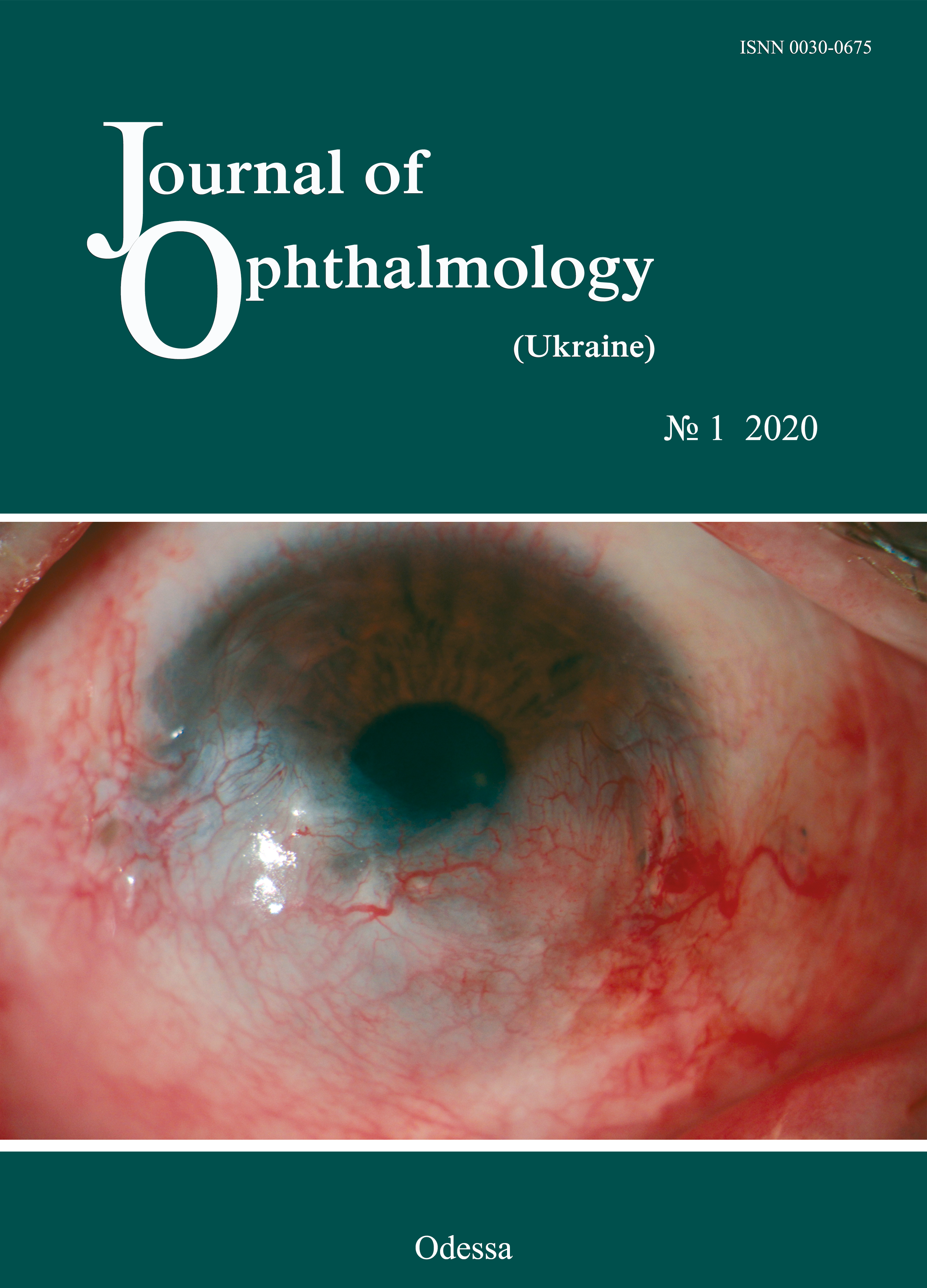The effect of trick intervention 20-20-20 on computer vision syndrome incidence in computer workers
DOI:
https://doi.org/10.31288/oftalmolzh202012227Keywords:
occupational health, CVS, computers, tricks 20-20-20Abstract
Computer Vision Syndrome is a collection of symptoms that occur due to overwork with computers, including laptops, desktops, tablets and other display devices (such as smartphones and other electronic reading devices). Resting your eyes continuously and regularly has a huge effect in overcoming the syndrome.
The purpose of this study was to analyze the effect of trick intervention 20-20-20 on the incidence of computervision syndrome in computer workers.
The research method used is Quasi Experimental Design with the form of Nonequivalent Control Group Design. The total sample of this study was 76 people divided into two groups, namely the intervention and control groups. The samples in each group amounted to 38 people obtained by purposive sampling. Bivariate analysis used the Wilcoxon test for paired samples and the Mann-Whitney test for unpaired samples with a significance level of 95% (? = 0.05).
The results of statistical tests in the intervention group showed significant differences in the score of computer vision syndrome between before and after the intervention (? <0.05). The results of statistical tests between the intervention and control groups also showed a significant difference in the incidence of computer vision syndrome between the intervention and control groups (? <0.05).
The conclusion in this study was that there was a significant effect of trick intervention 20-20-20 on the incidence of computer vision syndrome in respondents.
References
1.Anies, Kedokteran Okupasi Berbagai Penyakit Akibat Kerja dan Upaya Penanggulangan Dari Aspek Kedokteran. Yogyakarta: Ar-Ruzz Media.2014.
2.Torrey, Jon. Understanding Computer Vision Syndrome. Employment Relations Today, 2003; 30(1), 45-51.https://doi.org/10.1002/ert.10073
3.Beck, Melinda. Becoming a Squinter Nation: Glasses Can Correct Near and Far, but What About Those Screens in Between? The Wall Street Journal. Health Journal. (Jurnal Elektronik). 2010. [Accessed 20 Desember 2017]. Available at: https://www.wsj.com/articles/SB10001424052748704868604575433361436276340
4.AOA.The Effects of Computer Use on Eye Health and Vision. 1997. [Accessed 24 April 2017]. Available at:https://www.aoa.org/Documents/optometrists/effects-of-computeruse. pdf
5.AOA. Most Americans Experience Digital Eye Strain from Overexposure to Computers According to Survey. 2016. [Accessed 31 Oktober 2017]. Available at:https://www.aoa.org/newsroom/most-americans-experience-digital-eye-strai.
6.Rathore, Indu. Computer Vision Syndrome - An Emerging Occupational Hazard. Research Journal of Science and Technology. 2017. vol 9/ Issue - 02. [Accessed 17 Oktober 2017]. Available at; www.rjstonline.comhttps://doi.org/10.5958/2349-2988.2017.00053.5
7.Green, Jay. High Computer Use Creates Health Risk for Many Employees. Business Insurance; Iss. 30, (Jul 23, 2007): 16.
8.Reddy, S.C., Low, C.K., Lim, Y.P., Low, L.L., Mardina, F., and Nursaleha, M.P. Computer Vision Syndrome: A Study of Knowledge and Practices in University Students. Nepal J Ophthalmol 2013; 5 (10): 161-168.https://doi.org/10.3126/nepjoph.v5i2.8707
9.Gowrisankaran, and Sheedy, James E., Komputer Vision Syndrome: A Review. IOS Press Content Library 52 (2015) 303-314.https://doi.org/10.3233/WOR-152162
10.Mowry, C., and Ison, D. C. Assessing Computer Vision Syndrome Risk for Pilots. Journal of Aviation/Aerospace Education & Research, 2015. 24(2), 79.https://doi.org/10.15394/jaaer.2015.1617
11.Akinbinu, T.R., and Mashalla, R.J., Impact of Computer Technology on Health: Computer Vision Syndrome (CVS). Academic Journal Medical Practice and Review. 2014. Vol 5(3), pp. 20-30.
12.Ranasinghe, P., Wathurapatha,W.S., Perera, Y.S., Lamabadusuria, D.A., Kulutunga, Jayawardana, N., & Kutalanda, P., Komputer Vision Syndrome Among Komputer Office Workers In A Developing Country: An Evaluation Of Prevalence And Risk Factors. BMC Res Notes 2016.9:150.https://doi.org/10.1186/s13104-016-1962-1
13.Yustiarta, I., Susanti, Y., dan Budiman, B., 2015. Gambaran Gejala Klinis Komputer Vision Syndome pada Karyawan Akuntansi di Rumah Sakit Hasan Sadikin Bandung. [Accessed 16 Oktober 2017]. Tersedia di; http://karyailmiah.unisba.ac.id/index.php/ dokter/article/view/ 3839/pdf
14.Galinsky E., Ginsberg S. Follow the '20-20-20' rule for komputer work. Work & Family Life; New York 2016:31.7/8 (Jul/Aug 2016): 3.
15.Gupta, R., Gour D., Meena M. Interventional Cohort Study for Evaluation of Computer Vision Syndrome among Computer Workers. International Journal of Medical Research and Review. 2014. vol 2/ issue 1. [Accessed 16 Oktober 2017]. Available at:http://medresearch.in/index.php/IJMRR/article/view/72/233 https://doi.org/10.17511/ijmrr.2014.i01.08
16.Tribley J., McClain S., Karbasi A., & Kaldenberg J. Tips For Computer Vision Syndrome Relief and Prevention. Work 39.1 (2011): 85-87. [Accessed 20 Mei 2018] Available at: https://pdfs.semanticscholar.org/2949/a2c689c02342b09f45f0be107a759da278. https://doi.org/10.3233/WOR-2011-1183
17.Sugiyono. Metode Penelitian Kombinasi (Mixed Methods). Bandung: Alfabeta. 2014.
18.Lemeshow, S., Hosmer, D.W., Klar, J., Lwanga, S.K., Besar Sampel dalam Penelitian Kesehatan (Terjemahan Dibyo Pramono), Jogjakarta: Gajah Mada University Press. 1997.
19.Rahman, Z. A., & Sanip, S. Computer User: Demographic and Computer Related Factors that Predispose User to Get Computer Vision Syndrome. International Journal of business, humanities and technology. 2011. 1(2), 84-91.
20.MacMahon, Brian and Pugh, T.F., Epidemiology Principles and Methods. First Edition. Boston: Little, Brown and Company. 1970.
21.Rosenfield. Computer Vision Syndrome (AKA Digital Eye Strain). Optometry in Practice, 2016; 17(1), 1-10.
22.Rosenfield, M. Computer Vision Syndrome: a review of ocular causes and potential treatments. Ophthalmic and Physiological Optics 2011; 31(5), 502-515.https://doi.org/10.1111/j.1475-1313.2011.00834.x
23.Wimalasundera, Saman. Computer Vision Syndrome. Galle Medicall Journal 2006; Vol 11: No. 1. (Jurnal Elektronik) [Accessed 16 Oktober 2017]. Available at; https://gmj.sljol.info/articles/abstract/10.4038/gmj.v11i1.1115/https://doi.org/10.4038/gmj.v11i1.1115
24.Loh, KY., and Reddy, SC., Understanding and Preventing Computer Vision Syndrome. Malaysian Family Physician; 2008. Vol 3 No. 3. [Accessed 11 Pebruari 2018]. Available at; https://www.ncbi.nlm.nih.gov/pmc/articles/ PMC4170366/pdf/MFP-03-128.pdf
Downloads
Published
How to Cite
Issue
Section
License
Copyright (c) 2025 Putri Anggrainy, Rodiah Rahmawaty Lubis, Taufik Ashar

This work is licensed under a Creative Commons Attribution 4.0 International License.
This work is licensed under a Creative Commons Attribution 4.0 International (CC BY 4.0) that allows users to read, download, copy, distribute, print, search, or link to the full texts of the articles, or use them for any other lawful purpose, without asking prior permission from the publisher or the author as long as they cite the source.
COPYRIGHT NOTICE
Authors who publish in this journal agree to the following terms:
- Authors hold copyright immediately after publication of their works and retain publishing rights without any restrictions.
- The copyright commencement date complies the publication date of the issue, where the article is included in.
DEPOSIT POLICY
- Authors are permitted and encouraged to post their work online (e.g., in institutional repositories or on their website) during the editorial process, as it can lead to productive exchanges, as well as earlier and greater citation of published work.
- Authors are able to enter into separate, additional contractual arrangements for the non-exclusive distribution of the journal's published version of the work with an acknowledgement of its initial publication in this journal.
- Post-print (post-refereeing manuscript version) and publisher's PDF-version self-archiving is allowed.
- Archiving the pre-print (pre-refereeing manuscript version) not allowed.












